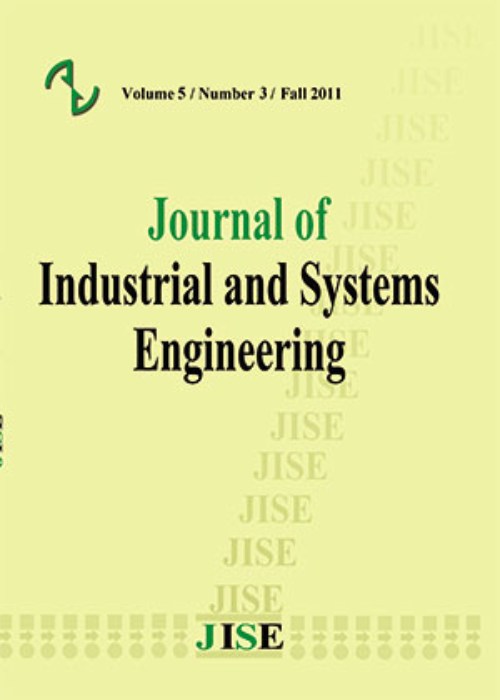فهرست مطالب
Journal of Industrial and Systems Engineering
Volume:2 Issue: 3, Autumn 2008
- تاریخ انتشار: 1387/08/11
- تعداد عناوین: 5
-
-
Page 164An Iterated Local Search method for the constrained two-dimensional non-guillotine cutting problem is presented. This problem consists in cutting pieces from a large stock rectangle to maximize the total value of pieces cut. In this problem, we take into account restrictions on the number of pieces of each size required to be cut. It can be classified as 2D-SLOPP (two dimensional single large objects placement problem) and has many industrial applications like in wood and steel industries. The proposed Iterated Local Search algorithm in which we use a constructive heuristic and a local search move based on reducing pieces. The algorithm is tested on well known instances from the literature. Our computational results are very competitive compared to the best known solutions of literature and improve a part of them.
-
Page 180Value Stream Mapping technique involves flowcharting the steps, activities, material flows,communications, and other process elements that are involved with a process or transformation.In this respect, Value stream mapping helps an organization to identify the non-value-adding elements in a targeted process and brings a product or a group of products that use the same resources through the main flows, from raw material to the arms of customers. In this study, a practical study carried out in a manufacturing industry for the manufacture of Machining center is discussed. The main aim was to draw the current state value stream mapping for the main components like Base, Column, Cross Slide, Milling Head and Table. Further, the paper has identified some of the processes which can be carried out by the sub contractor and suggested measures to be taken up by the higher level management in reducing the non value added process. It discusses the reduction in the set up time and cycle time that can be obtained through the implementation. This paper also discusses the plan of action for improving the Future State Value Stream Mapping (FVSM). A FVSM for the manufacture of Base is drawn.
-
Page 197Four heuristic algorithms are developed for solving the generalized version of tardiness flowshop problems. We consider the generalized tardiness flow shop model with minimization ofthe total tardiness as its performance measure. We modify the concept of cost over time (COVERT) for the generalized version of the flow shop tardiness model and employ this concept for developing four algorithms. The efficiency of the developed algorithms is then tested through extensive computational experiments and the results will be presented.
-
Page 214A review of the literature on cause selecting charts (CSCs) in multistage processes is given,with a concentration on developments which have occurred since 1993. Model based control charts and multiple cause selecting charts (MCSCs) are reviewed. Several articles based on normally and non-normally distributed outgoing quality characteristics are analyzed and important issues such as economic design, autocorrelated processes and adaptive design parameters of cause selecting charts are discussed. The results reveal that cause selecting charts outperform traditional Shewhart charts for individuals when the process steps are dependent, in view of the relationship between input and output quality characteristics. A new method for modeling and simulating a multistage process is proposed which can prove to be more reasonable in real practice. Finally, various directions for future research are given.
-
Page 236In this paper we consider a single machine system that produces items part of which aredefective. The defective items produced in a time period, consisting of several equal cycles, are accumulated and are all reworked in the last cycle of this period called the rework cycle. At the end of the rework cycle the whole process will start all over again.The first significant objective of this study is that, for the ease of production and resourceplanning, the rework cycle has to have the same length as the other cycles. The other objective is that the number of rework cycles be as small as possible, because of changeover costs needed for going from normal production to rework as well as special attention required for rework to satisfy the zero defect criterion. For this system, assuming no shortages are permitted we drive the total system cost per unit time and obtain the economic batch quantity which minimizes this total cost.


